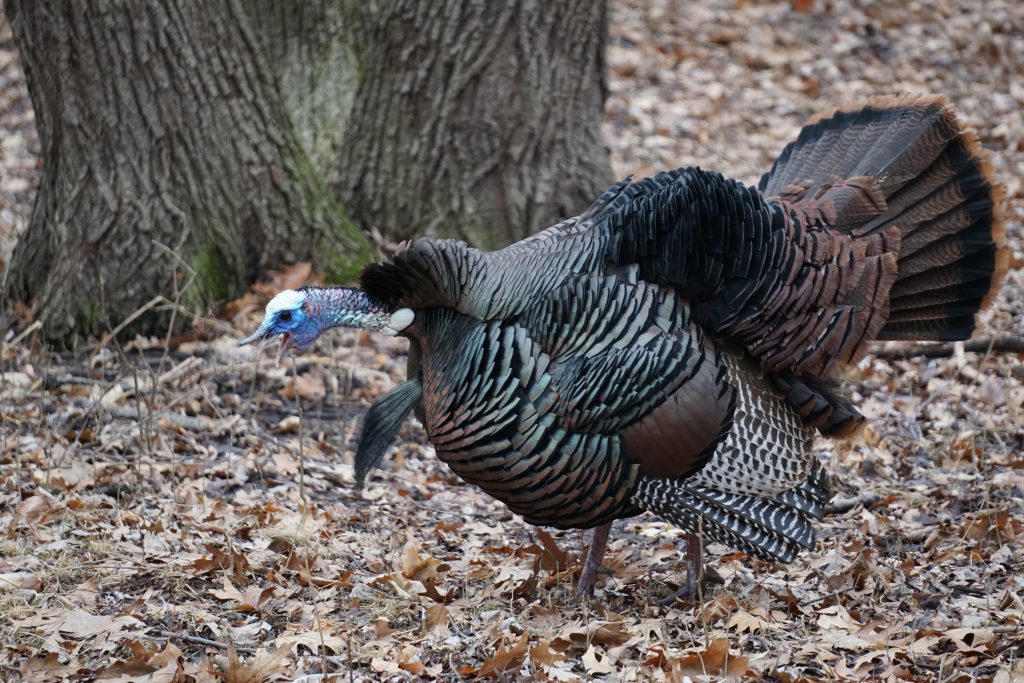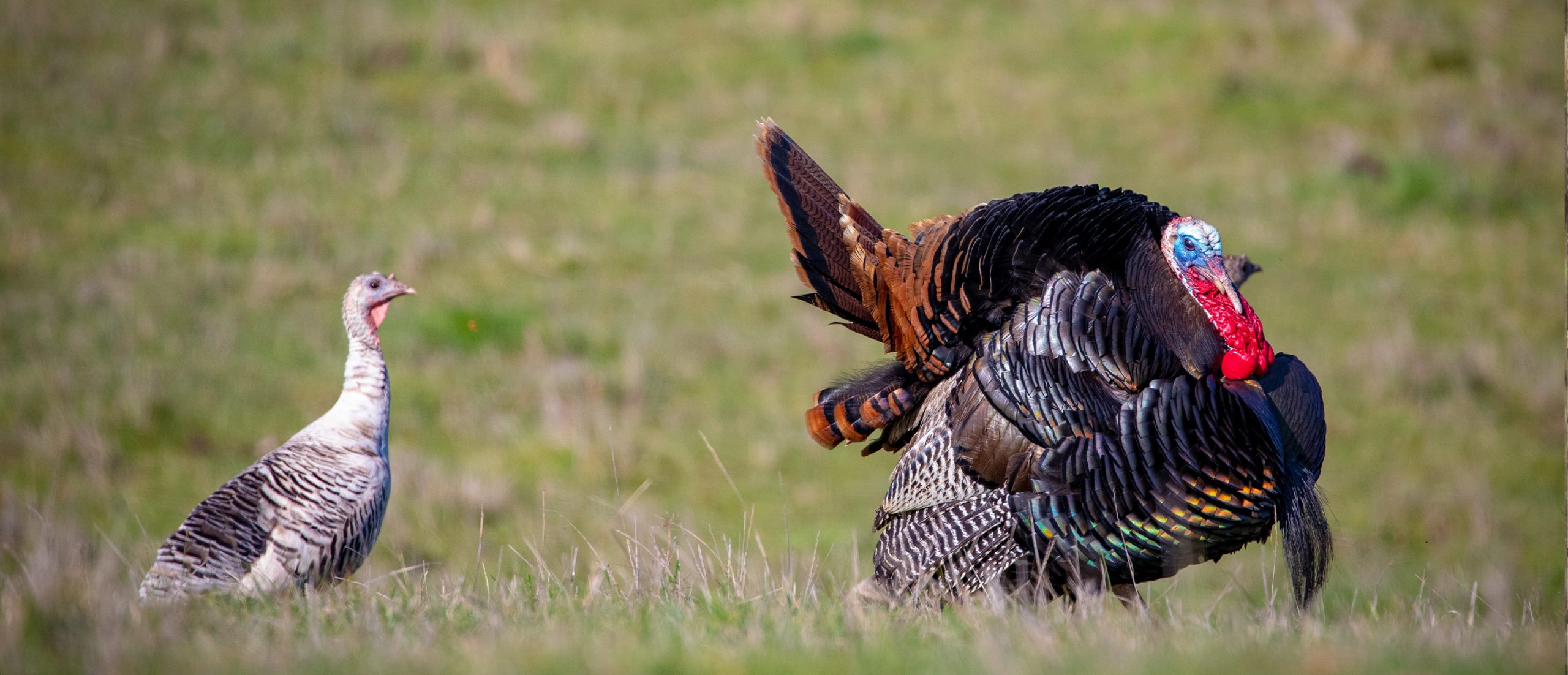Life of a Longbeard
We see them every spring—strutting, gobbling longbeards showing off their glory. It’s a display as old as time, and hunters never endingly gobble it up. Naturally, wild turkeys are very adaptable. Once they reach adulthood, wild turkeys can live up to 10 years. But a lot happens during the life of a longbeard. From a young poult to an old gobbler, much is experienced. Here’s just a brief glimpse into their world.
A Poult’s Life
Most turkey nests are in dense cover within early successional habitat. Oftentimes, hens locate nests within 20 yards of openings. Generally, a nest can have eight to 16 eggs, with an average of 10-12. The hen incubates her eggs for 28 days.
Shortly after hatching from the eggs, young poults begin moving around. Within two to three weeks, surviving poults take flight. Soon after that, they begin roosting in trees. Until then, the hen and her poults sleep on the ground in the nest. In this time, more than half will die by six weeks of age.
The rest will advance to the next stages of life. For those who have heard it, poults make a few sounds. Generally, it’s a peeping noise that signals their presence. As they get older, they will begin emitting other vocalizations as well. Soon, they develop into jakes and jennies (junvenile males and females).
A Jake’s Life
Months later, male poults become jakes. These birds are approximately one year old. They typically weigh 12-18 pounds, sport 2-6-inch beards, display tail fans with taller middle feathers (shorter feathers to each side) and have short, nubby spurs. Some jakes gobble, while others do not.
Generally, those that do gobble are slightly older, have longer beards, longer spurs and tend to strut more. These are oftentimes referred to as “super jakes.” They might or might not breed any hens. This hinges on the presence of adult gobblers within the local flock.
Of course, jakes usually travel in jake gangs. In winter, they tend to follow hen flocks. As colder days give way to spring, these tend to break apart from the hens and travel as true jake flocks. Rarely do jakes join ranks with older males. More commonly, jake groups gang up on single or paired-up toms. Generally, unless the jake gangs significantly outnumber them, these aren’t large enough to overpower toms that run together.
Most of the time, during the breeding season, jakes are outcompeted by older males. Rarely do jakes breed hens. When it does occur, it’s an outlier occurrence and is usually the result of poor flock age structure.
Adulthood

Once a gobbler matures, the gobbler has 5,000-6,000 feathers, stands 2 ½ to 3 feet tall, and weigh 18-25 pounds. In rare cases, turkeys can weigh up to 30 pounds. Now, the bird has an 8-12-inch beard, and in rare cases, might display multiple beards. As a 2-year-old, it has ¾-inch spurs. At 3 ½ years old, it has 1- to 1 1/8-inch spurs. At 4 ½-plus years old, it will likely sport 1 ¼-1 ½-plus-inch daggers. (All of these are based on averages.) Also, sometimes, beards and spurs break, so lengths aren’t always indicative of age.
Food and security are typical focuses throughout much of the year. Berries, insects, grasses, nuts, sedges, seeds, and other tender vegetation are primary food sources. According to New Hampshire Fish & Game, turkeys eat approximately 90% plant matter and 10% insects.
In summer, food sources are abundant. Life is good. Other than disease and predation, there aren’t many threats to wild turkeys. While turkeys prefer an abundance of mature timber mixed with ample early successional cover to provide nesting cover and additional food sources. Even so, according to Ohio DNR, turkeys can inhabit areas with as little as 15% forest cover. This is a time when turkeys settle into their warm-season ranges.
Once fall and winter arrive, food becomes more limited, and turkeys shift again. They continually search for food, and occasionally loaf around. This is a period where turkeys flock up according to their peers. For example, longbeards group with other longbeards, while jakes group with other jakes and hens with other hens. More times than not, these groups remain segregated and inhabit different areas. Naturally, pecking orders are sorted out, which minimizes fighting come the spring breeding season.
Winter can be especially difficult for longbeards, especially if heavy snowfall lasts for extended periods. These conditions make it more difficult for turkeys to forage for food. Extended periods of frozen, snow-packed conditions can take heavy tolls on turkey population totals. The heaviest price is a result of a lack of food, but predators take advantage of the situation, too.
Eventually, the frozen landscape thaws. In spring, the breeding cycle begins. Around this time, the proud longbeard begins strutting and gobbling more. Its head will exhibit changing coloration patterns, sometimes shifting from dull coloration to rich red, white and blue. Generally, the brighter the colors, the more stimulated the bird is, which typically occurs during courtship. When a tom is reproductively “in the mood,” its snood will elongate and hang down over its beak.
While 28 known sounds are associated with wild turkeys, toms gobble to attract hens. (They also emit other vocalizations.) Contrary to popular belief, the hens typically go to the toms, rather than toms going to the hens. Earlier in spring, before most hens go off to nest, this can result in large flocks of hens with one or a few longbeards.
Male turkeys are polygamous, though, and often breed with multiple hens. Most breeding takes place from mid-March to late April, with a peak in mid-April. Longbeards will continue to spread their genes as the breeding hierarchy, and sheer opportunity, permits.
Because spring turkey seasons are in full force, many longbeards fall to the bow or shotgun. Hunters take more adult male turkeys than anything. This is the leading cause of mortality for longbeards. As a result, longbeards that survive the spring turkey season stand a great chance of living another year.
Once the breeding subsides, hens begin laying eggs, and the cycle starts all over again. If needed, they will re-breed and re-nest. Then, a new generation of longbeards will be born, and the circle of life will continue.
And the NWTF is here to help ensure that it does.
